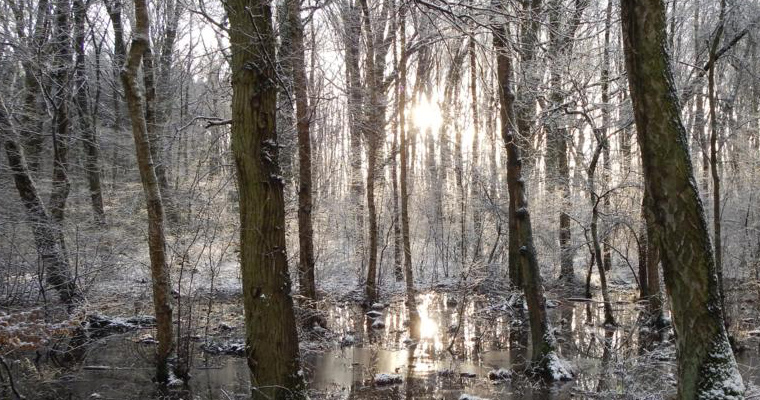Natural Habitat water

The forest soils, the shallow surfaces of water and the drainage ditches dry out in summer, while the ponds from electoral time and the lakes caused by former brown-coal mining are year-round filled with water. Even numerous little, often unnamed creeks are not missing in the Ville-forests. Most of their springs rise in the forests and then flow into the River Rhine.
'Maare' without volcanism
Königsmaar (’Kings pond’) or Rehsprungmaar (’Roe jump pond’) – most of the larger ponds in the Ville-forests peculiarly are called ’Maare’. They have nothing in common with the lakes made by volcanism in the Western Eifel. ’Maar’ is a Low German word for moor, sea or marsh and a general term for wetlands (moor, swamp, riparian and swamp forest) and standing waters. In some cases, we do not know if these ponds are natural or made by man.
Water means diversity
The diversity of different freshwater habitats enables a great richness of life forms. Microscopic animals like paramecium, beetles like the great diving beetle or differently shaped snails live in the ponds. Several species of dragonflies ramble in the water-rich forest habitats. Even birds and mammals use these ponds.
The ponds are particularly important for the amphibians like frogs, toads and newts, which migrate to their spawning grounds in spring. 16 of 18 amphibians of North Rhine-Westphalia occur in the project area.
If sufficient light penetrates the forest canopy, you can find a characteristic swamp and water vegetation. There is a belt of sedges or reeds, and water plants like pondweeds are floating on the water surface.
Habitat water in danger
Caused by the drainage ditches and the climate change, the waterlogging soils of the Ville-forests get dryer. Some temporary ponds silt up or the wet periods get shorter so that amphibians lose their spawning grounds.
The LIFE+ Project will stop this development by closing the drainage ditches. Ponds will be restored and new ones will be established so that the conservation status of the threatened species and the connectivity of biotopes for wandering species will be improved.





